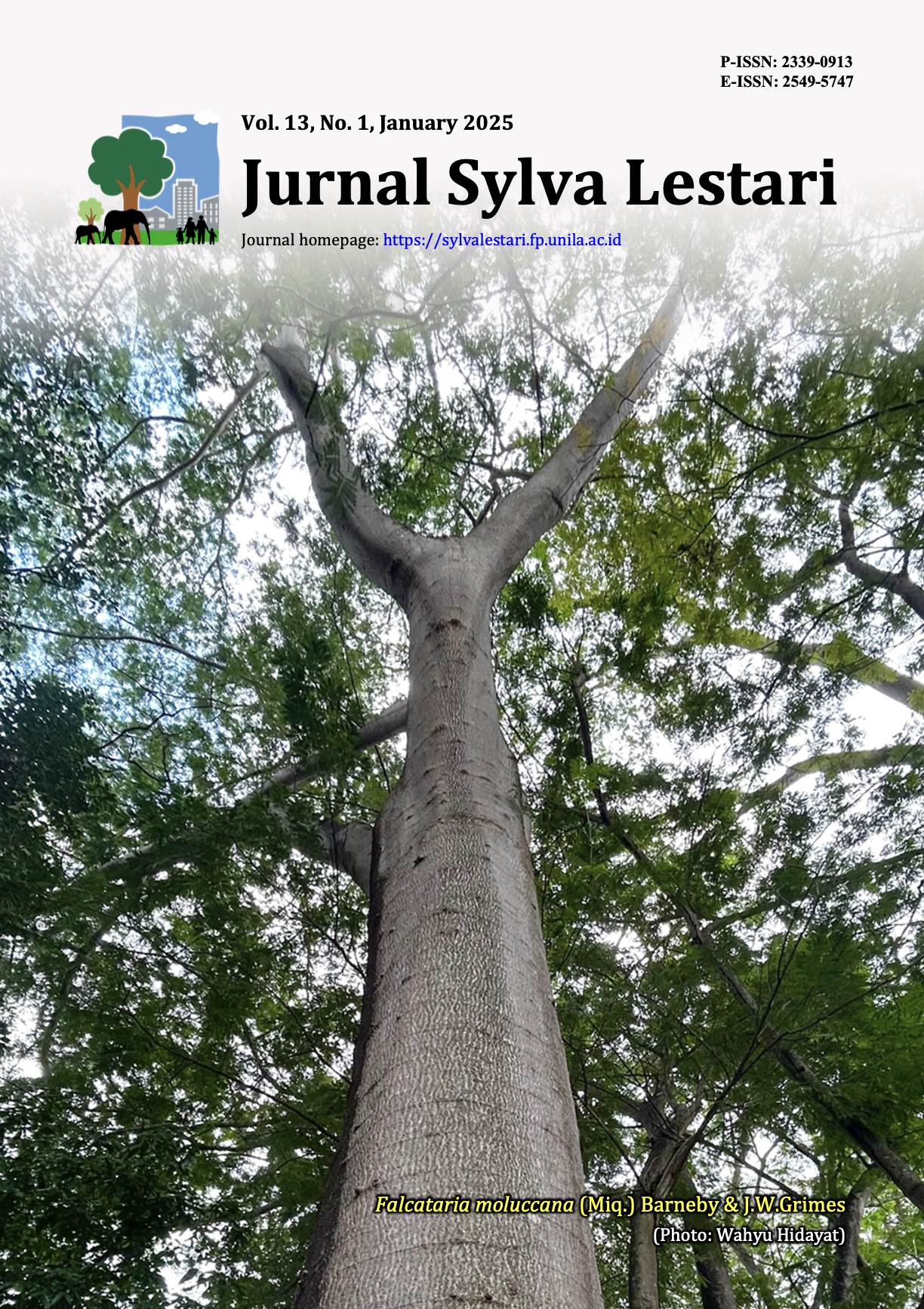Analysis of Alfisol Soil Infiltration Rate on Various Land Cover and Its Effect on Soil Erodibility in Mount Bromo Special Purpose Forest Area, Indonesia
DOI:
https://doi.org/10.23960/jsl.v13i1.993Abstract
Plant canopies can protect the soil surface from raindrops and rooting activities that cause changes in biophysical properties. A low infiltration rate will reduce the soil’s capacity to store water to be low, resulting in a high soil erodibility value. This research aims to obtain infiltration values on different land cover, analyze the effect of land cover on soil infiltration rate, and analyze the effect of soil infiltration rate on soil erodibility. The research includes exploratory, descriptive research with a purposive sampling method. The study results show an increased soil infiltration rate can reduce soil erodibility. The infiltration rate of 74-year-old mahogany land cover ranged from 1.94–3.03 cm/hour, 50-year-old mahogany 1.61 cm/hour, old pine 1.53–1.89 cm/hour, old tapped pine 1.54–3.43 cm/hour, young pine 0.48–1.60 cm/hour, young pine 0.37–0.61 cm/hour, and 5-year-old sonokelling 0.56–0.73 cm/hour. The highest infiltration value is in 74-year-old mahogany and the lowest in young pine. The highest soil erodibility value is in young tapped pine and the lowest in 50-year-old mahogany. Erodibility is the sensitivity of soil to erosion. It is easier to erode if its erodibility value is higher; conversely, erosion is less likely to occur if its erodibility value is lower. An increase in soil infiltration rate can reduce soil erodibility.
Keywords: Horton method, land cover, Mount Bromo, soil erodibility, soil infiltration rate
Downloads
Downloads
Published
How to Cite
Issue
Section
Statistics
 Abstract views: 613 times
Abstract views: 613 times PDF downloaded: 509 times
PDF downloaded: 509 times
Metrics
License
Copyright (c) 2025 Siti Maro'ah, Ongko Cahyono, Dwi Priyo Ariyanto, Tesalonika Pramudita

This work is licensed under a Creative Commons Attribution-NonCommercial 4.0 International License.
Authors retain copyright and grant the journal right of first publication with the work simultaneously licensed under a Creative Commons Attribution-NonCommercial 4.0 Licence that allows others to share the work with an acknowledgement of the work's authorship and initial publication in this journal.
Authors are able to enter into separate, additional contractual arrangements for the non-exclusive distribution of the journal's published version of the work (e.g., post it to an institutional repository or publish it in a book), with an acknowledgement of its initial publication in this journal.
Authors are permitted and encouraged to post their work online (e.g., in institutional repositories or on their website) prior to and during the submission process, as it can lead to productive exchanges, as well as earlier and greater citation of published work (See The Effect of Open Access).









